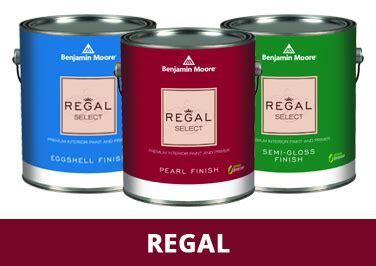Tips for Choosing Water-Based Paints

Key Features
- Low VOC and Eco-Friendly
Water-based paints emit fewer harmful chemicals, making them healthier for both the environment and indoor air quality. - Quick Drying and Easy Clean-Up
These paints dry faster than oil-based options and can be cleaned up with just soap and water. - Durability and Versatility
Water-based paints are resistant to yellowing, mold, and mildew, making them suitable for both indoor and outdoor projects.
Water-Based Paints
Choosing the right paint can be a daunting task. With so many options available, it's easy to feel overwhelmed.Water-based paints have gained popularity in recent years. They're known for their eco-friendly properties and ease of use.
In this guide, we'll focus on how to choose the best water-based paints. We'll delve into their advantages, application tips, and durability.
We'll also discuss how to select the perfect water-based patio stain. This will help you achieve a beautiful and long-lasting finish for your outdoor spaces.
Whether you're a DIY enthusiast or a professional painter, this guide will provide valuable insights. It's time to make informed decisions for your painting projects.by Alexandra Diaconu (https://unsplash.com/@dasdasha2015)
Understanding Water-Based Paints
Water-based paints, also known as latex or acrylic paints, are made up of pigment and binder suspended in water. As the water evaporates, it leaves behind a film of paint on the surface.These paints have evolved significantly over the years. Today, they offer excellent performance and versatility, suitable for both interior and exterior applications.
Things to Know
- Water-based paints are low in VOCs, making them healthier for the environment and your indoor air quality.
- They dry faster than oil-based paints, allowing for quicker reapplication and project completion.
- Proper surface preparation is crucial for achieving a smooth, long-lasting finish with water-based paints.
- Look for water-based patio stains that offer UV resistance and mold protection for outdoor durability.
- Cleaning up after using water-based paints is simple—just use soap and water.
Advantages of Water-Based Paints
One of the main advantages of water-based paints is their low VOC content. VOCs, or volatile organic compounds, are harmful chemicals that can cause health issues. With water-based paints, you're exposed to fewer of these toxins.
Another benefit is the quick drying time. Water-based paints dry faster than their oil-based counterparts. This can speed up your painting project and allow for quicker recoats.
Water-based paints are also easier to clean up. You only need soap and water to clean your brushes and spills. No need for harsh and smelly solvents.In terms of durability, water-based paints have come a long way. They resist yellowing over time, unlike oil-based paints. They also withstand temperature changes better, making them ideal for outdoor use.
Lastly, water-based paints are more environmentally friendly. They produce less odor and fewer harmful emissions. This makes them a preferred choice for green building practices.
Water-Based vs. Oil-Based Paints
When comparing water-based paints to oil-based ones, it's important to consider your specific needs. Oil-based paints are known for their high gloss and durability. However, they take longer to dry and have a strong odor.
On the other hand, water-based paints dry quickly and have a low odor. They're easier to work with and clean up. Plus, they're less prone to yellowing over time.In terms of environmental impact, water-based paints are the clear winner. They have lower VOC levels and are easier to dispose of responsibly.
Selecting the Right Water-Based Paint for Your Patio
Choosing the right water-based paint for your patio can be a daunting task. There are many factors to consider, from the type of surface to the desired finish.by Oscar Keys (https://unsplash.com/@oscartothekeys)
Factors to Consider for Patio Stains
First, consider the type of surface you'll be painting. Water-based paints work well on both wood and concrete. However, some are specifically formulated for certain surfaces.Next, think about the finish you want. Water-based patio stains come in a variety of finishes, from matte to glossy. Your choice will depend on your aesthetic preference and the look you want to achieve.
Durability is another important factor. Look for water-based paints that are resistant to mold and mildew. This is especially crucial for outdoor applications. UV resistance is also key to prevent fading and maintain color integrity.
Also, consider the paint's application temperature. Check the manufacturer's guidelines to ensure proper adhesion and drying. Some water-based paints can be applied directly over previously painted surfaces without the need for a primer.
Lastly, consider the maintenance and reapplication requirements. Some water-based stains may require more frequent reapplication, especially in high-traffic areas or harsh weather conditions.
Application Tips for Water-Based Patio Stains
When applying water-based patio stains, preparation is key. Ensure the surface is clean, dry, and free of loose paint or debris.Use the right tools for the job. Brushes, rollers, and sprayers can all be used with water-based paints. The choice depends on the size of the area and the desired finish.
Lastly, always perform a patch test. This will give you an idea of how the paint adheres and looks on the intended surface. It's a small step that can save you from potential disappointment down the line.
In Our Experience
"Water-based paints are incredibly user-friendly and durable, especially for outdoor projects like patios. They provide a smooth, even finish with less effort, and the quick drying time means you can complete projects faster. We’ve found that proper surface preparation and choosing a high-quality water-based paint are key to long-lasting results."
Durability and Maintenance of Water-Based Paints
Water-based paints have come a long way in terms of durability. They are now on par with oil-based paints, making them suitable for both interior and exterior use.
They are less prone to yellowing over time compared to oil-based paints. This makes them a great choice for areas exposed to sunlight, like patios.
Ensuring Longevity of Your Patio Stain
To ensure the longevity of your patio stain, proper maintenance is key. Regular cleaning can help maintain the appearance of the paint and prevent build-up of dirt and grime.
If the paint starts to peel or fade, a fresh coat may be necessary. Always follow the manufacturer's instructions for reapplication.
Remember, the longevity of your patio stain also depends on the quality of the paint. Investing in a high-quality water-based paint can save you time and money in the long run.
Eco-Friendly and Health Benefits
Water-based paints are known for their eco-friendly properties. They have low VOC content, which reduces their impact on the environment.In addition, they contribute to better indoor air quality. This makes them a healthier choice for your home and family.
Choosing Low-VOC Water-Based Paints
When choosing water-based paints, look for low-VOC options. These paints have fewer volatile organic compounds, which are harmful to the environment and your health.Also, consider paints with environmental certifications. This ensures they meet eco-friendly standards.
Practical Tips for Working with Water-Based Paints
Working with water-based paints is relatively easy. However, there are a few tips that can help you achieve a professional finish.Firstly, always perform a patch test. This will give you an idea of how the paint adheres and looks on the intended surface.
Secondly, ensure consistent stirring and mixing of the paint. This is crucial for achieving a uniform color and finish.
Surface Preparation and Application
Proper surface preparation is key to achieving the best results with water-based paints. This includes cleaning the surface and allowing it to dry completely before painting.
When applying the paint, follow the manufacturer's guidelines for application temperatures. This ensures proper adhesion and drying.Remember, water-based paints can be applied using a variety of tools. These include brushes, rollers, and sprayers.
Clean-Up and Disposal
Cleaning up after using water-based paints is easy. You only need soap and water, unlike oil-based paints that require solvents.When disposing of water-based paints, follow local regulations. Even though they are eco-friendly, improper disposal can still harm the environment.
Final Thoughts
Choosing water-based paints for your patio or other home improvement projects is a smart choice. They offer numerous benefits, including ease of application, durability, and eco-friendliness.
Remember, the key to a successful painting project lies in proper preparation, application, and maintenance. Happy painting!
Do You Have Questions? Give Us A Call With Any & All! 503-389-5758
-
People Also Ask:
What are the advantages of using water-based paints?
Water-based paints offer low VOC content, quick drying times, and are eco-friendly, making them ideal for both interior and exterior use.
How do you apply water-based paint to a patio?
Prepare the surface by cleaning it thoroughly, apply the paint with the right tools like brushes or sprayers, and follow manufacturer guidelines for the best results.
Can water-based paints be used on concrete and wood surfaces?
Yes, water-based paints work well on both concrete and wood surfaces, making them versatile for various outdoor and indoor applications.
-
SUBSCRIBE TO OUR BLOG: Stay informed with the latest in Painting and DIY projects by subscribing to Lightmen Painting. Get insights, tips, and more delivered straight to your inbox. We would also love to know what you would like to read about, leave thoughts on where we should go next. Interests, Topics, Ideas, all are welcome.
If your in the Portland, Or. area and need advice or a free no obligation estimate call us at 503-389-5758 or email scheduling@lightmenpainting.com
Shout Out
Celebrating Tall Guy Painting: Excellence in Professional Painting Services
From the team at Lightmen Painting, we extend our highest praise to Tall Guy Painting for their commitment to providing top-notch painting services in Vancouver. Just as we believe in the value of hiring qualified, licensed, and insured professionals, Tall Guy Painting emphasizes the importance of quality workmanship and customer satisfaction. Their dedication to excellence aligns perfectly with our mission to deliver superior painting solutions that enhance and protect your home.
Thanks for stopping by Lightmen Daily! Stay tuned for more practical tips and expert advice on making your painting projects flawless, from wall to floor!
Definitions
- Water-Based Paints – Paints made using water as the primary solvent, known for eco-friendly properties.
- VOC (Volatile Organic Compounds) – Harmful chemicals found in traditional paints; water-based paints have lower VOC levels.
- Eco-Friendly Paint – Paints that are designed to have minimal environmental impact, with low emissions of harmful substances.
- Latex Paint – A type of water-based paint known for easy clean-up and quick drying.
- Acrylic Paint – Water-based paints that use acrylic resins, offering good durability and flexibility.
- Patio Stain – A water-based stain designed for outdoor use, typically applied to wood or concrete surfaces to protect and enhance appearance.
- Durability – The paint’s ability to withstand wear and tear, particularly important for exterior applications.
- Primer – A preparatory coating applied before painting to enhance adhesion and durability of the final coat.
- UV Resistance – The ability of the paint to resist fading caused by exposure to sunlight.
- Clean-Up – The ease of cleaning paint tools and surfaces after applying water-based paints, requiring only soap and water.
Lightmen Painting Serving: Portland, Tigard, Lake Oswego, Tualatin, West Linn, Milwaukie, Sherwood, Happy Valley, Oregon City, Beaverton, Hillsboro, Gresham
